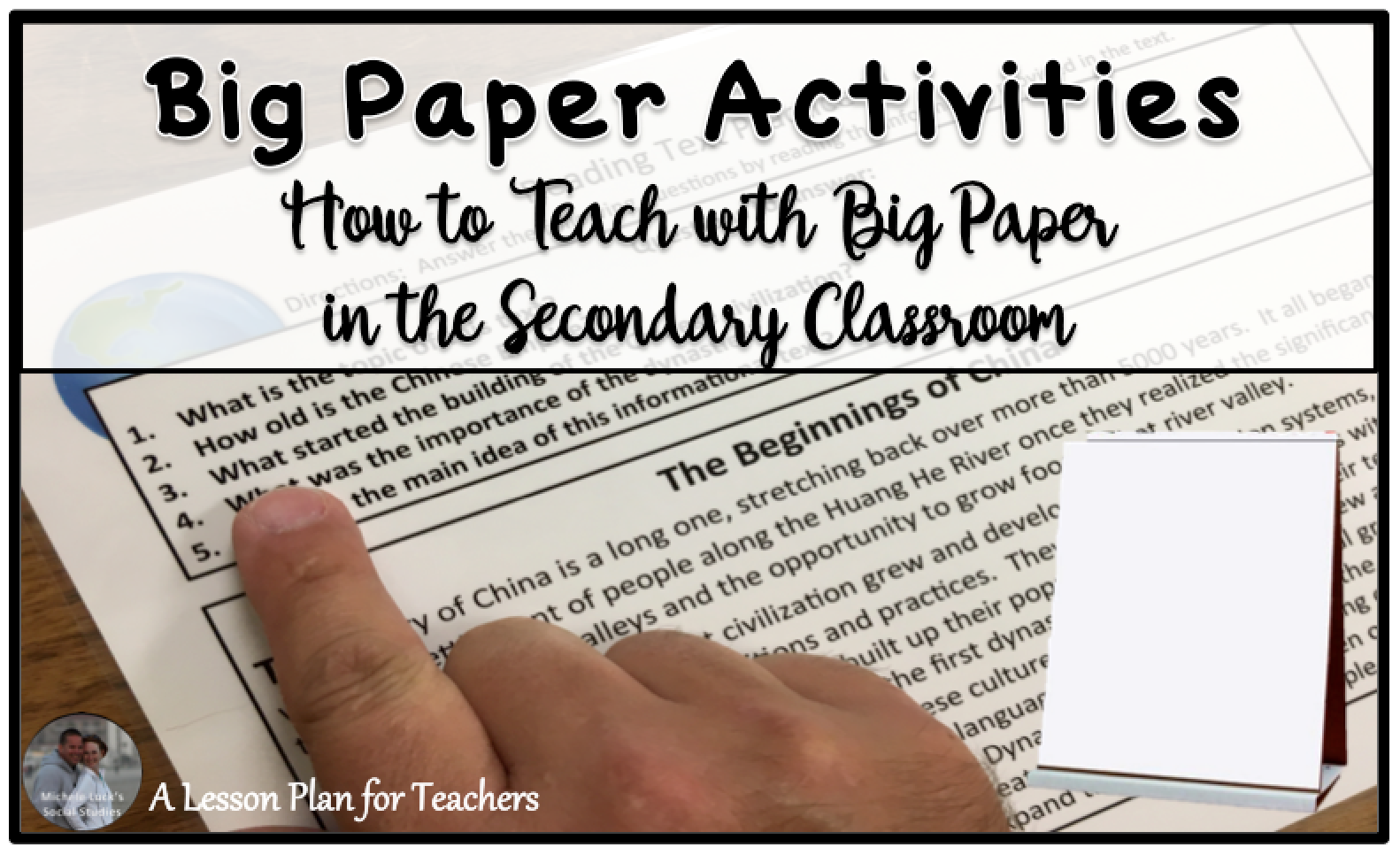Teaching with big paper in the secondary classroom is not a big secret. It is a tool from the past that holds incredible value for middle and high school students, and it’s use can encourage a classroom climate and classroom participation that is otherwise not achievable.

Activities Using Big Paper in the Secondary Classroom
- Reflective Activities – This is the most valuable use for Big Paper! With students often hesitant to share their personal thoughts or feelings, allowing them to share their thoughts and opinions in an anonymous manner opens doors for amazing sharing and contributions that will prompt greater thought and collaboration.
- Thought-Provoking Activities – There are many lessons we must teach in the secondary classroom that are hard lessons to learn. It’s not the skills that make them challenging, it’s the content itself. Using Big Paper in a quiet classroom provides the setting where students can think, process, and contribute. These fostered quiet discussions can be better controlled than am oral discussion, and can yield much deeper contributions.
- Emotional Lessons – Some content taught (especially in the Social Studies classroom) can draw on the heart-strings of students. Teaching these in a silent setting with Big Paper allows students to address their emotions with the content, while also tackling the fear and anxiety that often comes to teens when facing such a lesson.
- Skills Practice – Big Paper can be a great tool for reviewing skills and allowing practice. Posting simple tasks on Big Paper can create a classroom of constant practice where students can be engaged in a less formal setting with the skills they need for success.
- Games & Play – Using Big Paper with Scavenger Hunt clues can turn your classroom into a giant game board where students interact with your content and with each other, fueling competition and excitement for learning!

Tips for Using Big Paper in the Secondary Classroom
- Don’t spend a fortune on fancy presentation paper for Big Paper activities. Visit your local newspaper and ask for the “end rolls” from their printing lines. These rolls are perfect for big paper activities and also for bulletin boards and so much more!
- Use silence in conjunction with the Big Paper for the greatest student participation and collaboration. Students are much more willing to share when they have the opportunity to hear their own thoughts!
- Allow ample time for students to visit the Big Paper locations and to cultivate their responses to the questions or activities posted. Use an online timer such as Online Stopwatch to keep the flow and productivity going.
- Utilize well developed resources for greatest student benefit with Big Paper activities. While you can use simple questions or prompts with the activity, deeper lessons can emerge when content-strong resources are added for student evaluation and consideration. Resources that provide the guiding questions can also help students move toward the higher levels of Blooms in their activity participation.
- Provide great tools for great Big Paper contributions. Place varied colored pens or pencils at each location. Layout highlighters where students can emphasize their own or others points. Even atlases or other relevant tools could add to student thought and development.
- Always allow students to return to each Big Paper location to read other student responses and to add counter-points to enhance the discussion. Doing multiple rounds allows for detailed rebuttal and greater thought.
- Set standards for Big Paper use. Go over the rules before the activity and always reinforce the classroom rules. Monitor your students as they contribute to assure appropriate participation.
- Facilitate learning by traveling the Big Paper locations and discussing your students contributions with them as they post. Ask questions, make suggestions, and even play devil’s-advocate. However, do NOT give your students the answers or demean their individual contributions.
However you choose to use Big Paper in the classroom, it will be worth it for your students. The collaboration and participation that it brings will be unprecedented, and the learning will be evident.

Happy Teaching!